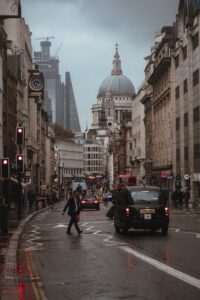The RCN has a problem. Nurses wages are being eroded by inflation and the cost of living.
The political optics aren’t good; whatever the rights and wrongs of trickle-down economics, nurses aren’t going to get any richer, anytime soon.
It’s the job of a trades-union to look after the pay-n-rations of its members. Thus, they’re polling, with a view to strike action.
If there is a ‘yes’ vote, the RCN have another problem. A bigger one. How will they manage public relations?
Will the public say; ‘Go for it and if I need treatment, I’ll struggle on without it…’
Or, will they say; ‘I’m in the same boat as you and I’m not going on strike, so suck it up. I want my operation.’
This is thorny, tricky and risky.
Are the RCN living in a bubble? Do they really understand the mood behind the front-doors of the nation?
Will nurses really walk out of A&E and operating theatres? Will midwives really leave mums in labour?
If they did, it would ruin the RCN for a generation and probably provoke Tizzie into new legislation, banning strikes for public service workers.
The next-best bet is for the RCN to withdraw their members from non-emergency venues… clinics and out-patent appointments.
Would that matter?
Not all nurses belong to the RCN. Not all RCN members work in the NHS, or work, at all… and a lot belong to Unison who will probably coordinate with the RCN.
How many nurses would strike?
There are about 300,000 nurses working in the English NHS.
Who belongs to what and how many, is one of the deep mysteries of life.
Let’s guess half of them belong to either Unison or the RCN and 100,000 acquiesce to some form of strike action.
What’s the impact?
In 2021 there were just under 102 million outpatient appointments recorded in Hospital Episode Statistic’s data.
I make that about 425,000, a day.
Turning to the wisdom of the-back-of-an-envelope and a pencil… if around half of clinics are cancelled, that’s; 200,000 people left waiting
A one day strike? The unions tried that in 2014, David Cameron ignored it. In Parliament, he called it a damp-squib.
A proper strike? Three weeks? Well, that means 3,000,000 patients not seen… and a lot of them will be very cross!
Is it an exaggeration that it is likely some would die, whilst waiting for the NHS to catch up?
Could the RCN, or UNISON maintain public support?
The Labour Party will run a mile.
The NMC, goodness knows. Their gobbledygook is here.
Nurses will be abused. What started out as a bit of fun, huddled around a brazier, blowing kisses to passing motorists; ‘giving a toot-to-support’, could, easily, turn nasty.
The RCN would implode.
There’s already a tension; are they a Union or a Royal College? All but invisible through Covid. Beset with internal problems, tribunals and rows. Don’t have a recognisable, national, leadership figure and…
… far from ready to go to war with Tizzie and Kamakwazi.
A strike, that set out to do minimum damage, would be very damaging. Let’s face it; strikes are supposed to damage, inconvenience and be a damned nuisance.
Nurses are in a near unique position.
They are employed by Trusts who have no power over how much nurses are paid.
Unlike, say, a shopkeeper or factory owner.
They serve a public who are unable to find an alternative supplier for their healthcare.
Unlike a rail traveller, who might switch to a bus, bike, car or shank’s.
They stop working and they damage their employer and patients. Both of whom are powerless to influence the outcome of a strike.
The position, working people find themselves in, is totally unacceptable and a society, where people are not free to withdraw their labour, is not a free society…
…but, remember, that freedom is likely to be a burden on millions of people, who are least able to bear it.
The gamble; a strike will turn public opinion against Tizzie.
The bigger gamble is; does she care…
News and Comment from Roy Lilley
Contact Roy – please use this e-address roy.lilley@nhsmanagers.net
Reproduced at thetrainingnet.com by kind permission of Roy Lilley.








